Common Event Planning Mistakes (And How To Avoid Them)

Written by Jonathan Kazarian, Event Technology Leader and CEO of Accelevents
Planning an event is stressful. While you want things to run like a well-oiled machine, there will be times when things feel more like a rusted-out scrap pile.
It is important to remember that no event is perfect, there are often minor slip-ups. Even with all the event management experience in the world, mistakes happen.
Minor hiccups are not likely to be noticed by guests, attendees, or the client, but you can bet on these folks noticing when disaster strikes.
As an event manager or event planner, you need to pay close attention to every detail in order to deliver the greatest guest experience possible.
From corporate event planning to smaller, private or community events, mistakes can happen.
Here’s a list of some of the most common event planning mistakes and some advice on how to avoid them.

Underestimating Event Size
Running a successful event marketing campaign that generates buzz is great, but running out of space for your excited attendees on the day of the event is definitely not great.
It can be difficult to accurately estimate the number of attendees that will show up to your event, and in general, it’s better to slightly overestimate to ensure that you have room to accommodate everyone who wants to attend.
Splacer is a good venue search tool that will help you find unique venues and give you an idea of what kinds of spots are available for your event type and location. Try to use past events you’ve organized or similar industry event data to get an idea of many people your event will attract. Keep these details in mind when searching for a venue and or/ building a guest list.
By planning for more guests than you actually anticipate, you can select your venue and start putting together your marketing materials and begin to promote your event. For ease, be sure to use an event ticketing website and establish your event’s website and social media pages.
If you are still concerned about going over capacity, you can set a limit on the number of tickets being sold, guaranteeing that your numbers stay within your margins.
Pro tip: If you put a cap on ticket sales, allow people to sign up for a waiting list. This ensures that any cancellations will be replaced and prevent the event from being undersold.
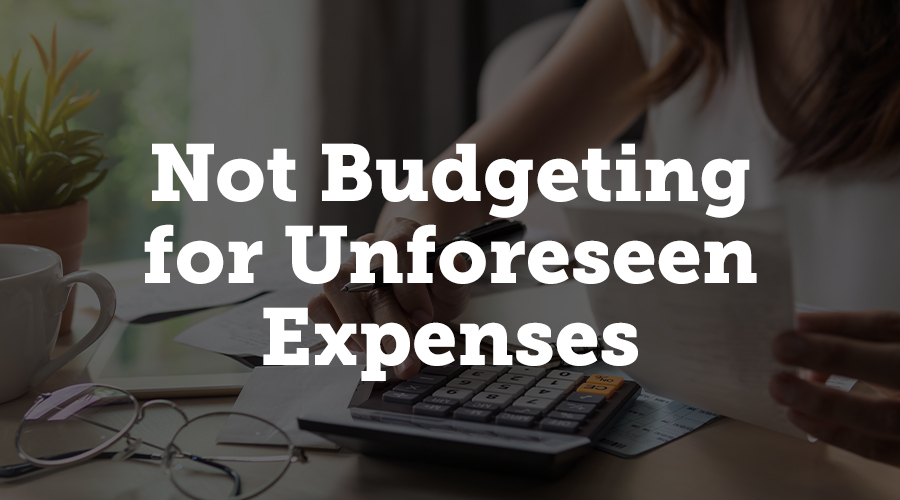
Not Budgeting for Unforeseen Expenses
The second you start planning your event, the first item on your to-do list should be “create a budget. ”
It is important to understand how much money you have to work with. Once you know that, you can break it down and allocate the money based on the costs determined by quotes you receive from vendors. Don’t forget to include any marking costs in your budget!
Do not spend all of your budget. If possible, keep a buffer to cover unforeseen costs or expenses. Try to keep anywhere from 10% to 15% of your budget on hand to cover any issues that may arise.
Be sure when booking vendors and suppliers that everything you require and expect from them is included in the contract. There is nothing worse than accepting a quote for services and finding out that one of the things you require is not included and will cost you more.
Event budgets that are not adhered to can spell disaster. Assign a member of your team or planning committee to be in charge of the budget. This will be the person who controls the outward flow of money and makes sure that everything is adding up.
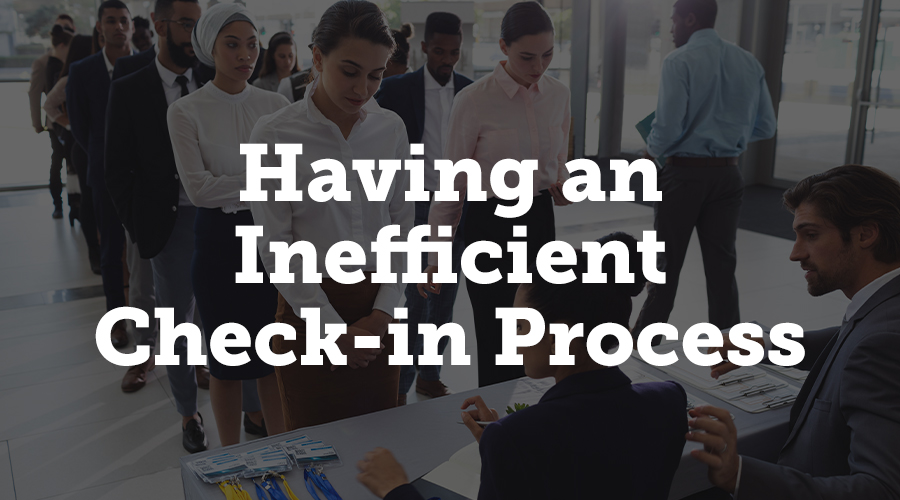
Having an Inefficient Check-in Process
The event check-in is likely to be your guests’ first point of contact and their introduction to your event. Even if your pre-event communication and touchpoints were flawless, a slow and inefficient check-in process can quickly frustrate attendees and give them a bad taste in their mouths before the festivities even begin.
A disgruntled audience is not good for anyone.
Streamlining your check-in process is essential. For starters, make sure you set up registration in a place that not only makes sense to arriving guests but also gives you enough room. You want to be near the entrance but allow people to move through the space without clogging it up.
Post signage so people know where they should be going and where the queue begins. You don’t need confused people milling about and causing even more confusion.
Make sure you have enough people to process registrations and check-ins. This will reduce wait time and gives you and your team a chance to great arrivals in a warm and friendly manner.
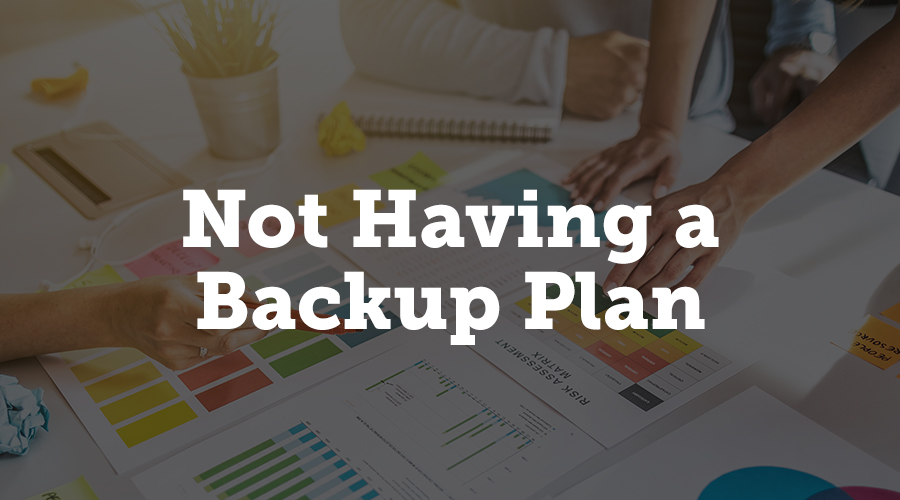
Not Having a Backup Plan
Meticulously planning every part of your event is only half the battle.
Attention to detail in the event planning process is great, but Murphy’s Law is real and you be sure that something will go wrong at some point, either before the event or on the day of. Mitigate the damage by having a contingency plan.
Once you have chosen vendors and set your event agenda, take some time to think about all of the things that could potentially go wrong. What happens if the projector the presenters need fails? What happens if a vendor fails to show up? You wanted black table clothes but will be okay with the white ones onsite at the venue? What happens if catering falls through? Look at every task on your to-do list and think of any potential problem that could come up.
Ensure you have access to back up technical equipment, for example, and create a list of back up vendors to can use should someone drop out or not show up. And to make sure everyone is on the same page, be sure that you are in communication with the venue and all vendors 48 hours before the set up is meant to take place.
It is unlikely that you will have to use this plan but having it ready can give you peace of mind as the event approaches. It can make the difference between staying calm and poised, or going into full panic mode.

Skipping a Walkthrough
It doesn’t matter how much communication you do with the venue, vendors, and your management or volunteer teams in advance of the event, if you don’t plan a walkthrough, something is sure to be missed.
Whenever possible, go over the itinerary or agenda with your team or clients onsite in advance of the day. This will ensure that any transitions go off without a hitch and that all the pieces are in place.
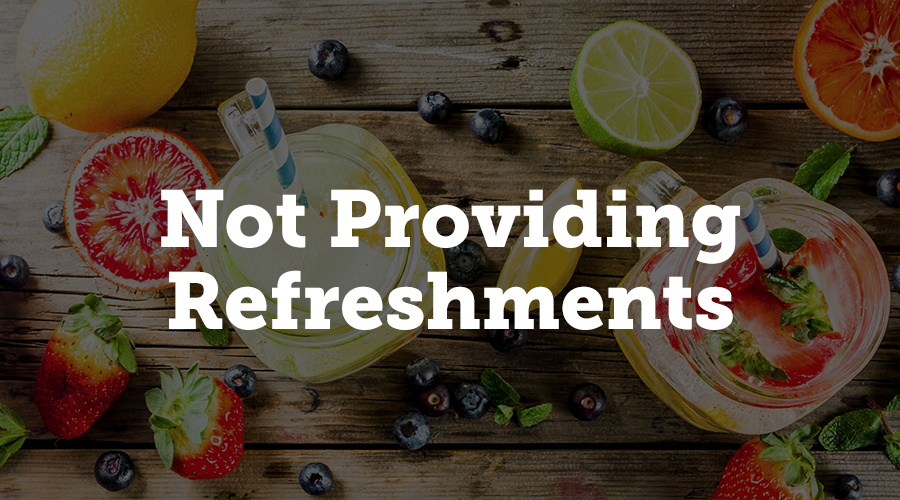
Not Providing Refreshments
No matter what type of event you are planning, food and drinks should be a part of it. Whether you’re hosting a series of breakout meetings or a big corporate conference, you need to make sure your guests are fueled.
The type and amount of food you provide will depend on the nature of the event. Be sure to work in a variety of options that cover a range of dietary needs and restrictions to give guests the best experience possible. Be sure to allow ticket buyers to inform you of any allergies or restrictions in advance of the event.

Ignoring Competing Events
While you or your client may have a particular date in mind, you do not want to be running up against other, similar events.
If you are planning a beer festival, for example, it will not be a good idea to schedule it for the same time as the established, long-running music festival that has been happening at the same weekend for years and years. Not only will it make venues and vendors harder to find, but you may also be competing for the same audience. Why make things harder than they need to be.
If you are planning to hold your event in a hotel or conference center, make sure you understand any other events that may be happening under the same roof, using the same resources. Talk to the venue managers so you have a clear picture of what will be going on in the common areas of the space and who will be using which resources and when. That way you can improve your signage or make any minor adjustments to your event agenda.
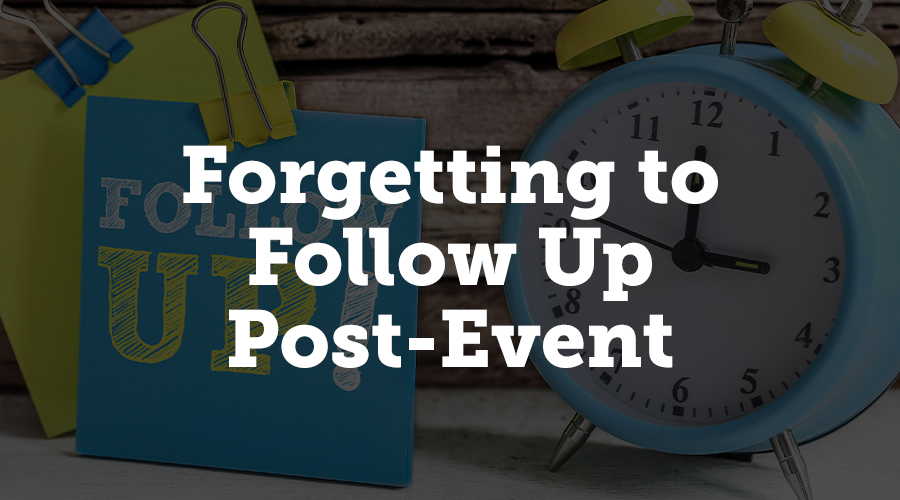
Forgetting to Follow Up Post-Event
At the conclusion of a successful event, you’ll be worn out and ready to wrap up with a pat on the back but before you do that, you have a few more things you need to do first!
You should follow up with attendees, speakers, and vendors to make sure that you take advantage of possible feedback and establish a relationship that will make them more likely to participate in your events in the future.
To maintain your professional reputation be sure to send out thank-yous to everyone involved with your event. Include a survey for participants and encourage them to leave feedback if they have the time. This feedback is one of the best ways to improve your planning process and strategy before your next event.
Event planning and management are not easy. Avoid these common event planning mistakes to reduce stress and keep your event running smoothly. Implementing these recommended solutions will make sure that your event is both successful and enjoyable for you, your team, and all participants!
About Jon
Jon is CEO and Founder of Accelevents, the affordable, event platform for event ticketing and mobile fundraising. He is responsible for setting and executing the vision for the company. Jon is passionate about the event experience and how technology can be used to enhance that experience. Throughout his time at Accelevents Jon has had the opportunity to work with an learn from thousands of events.